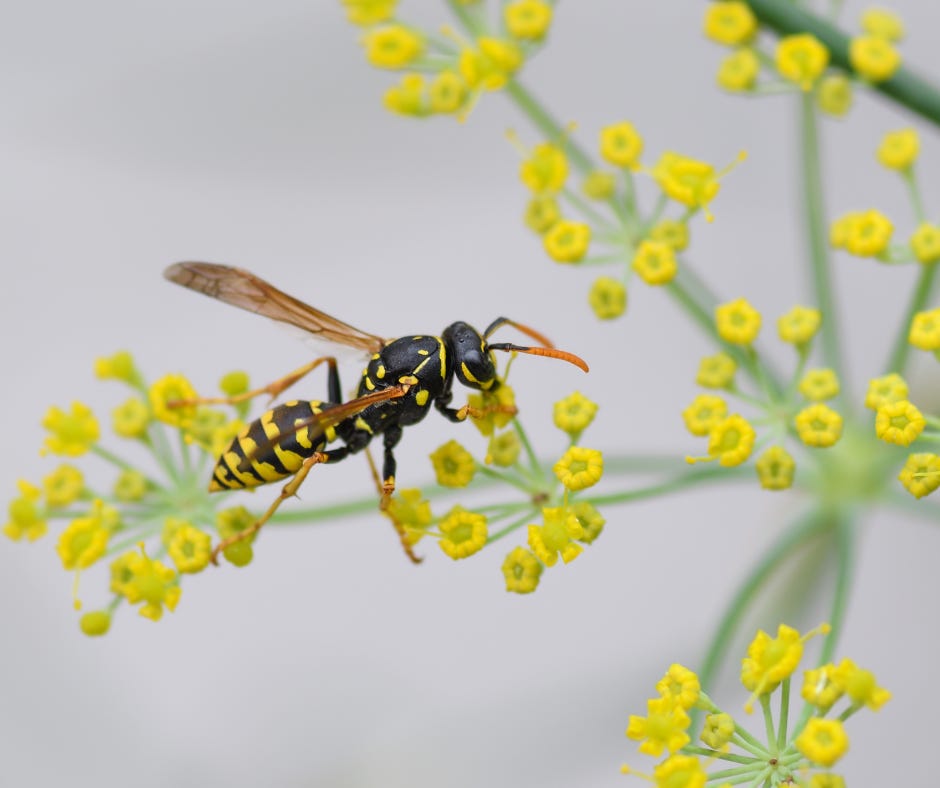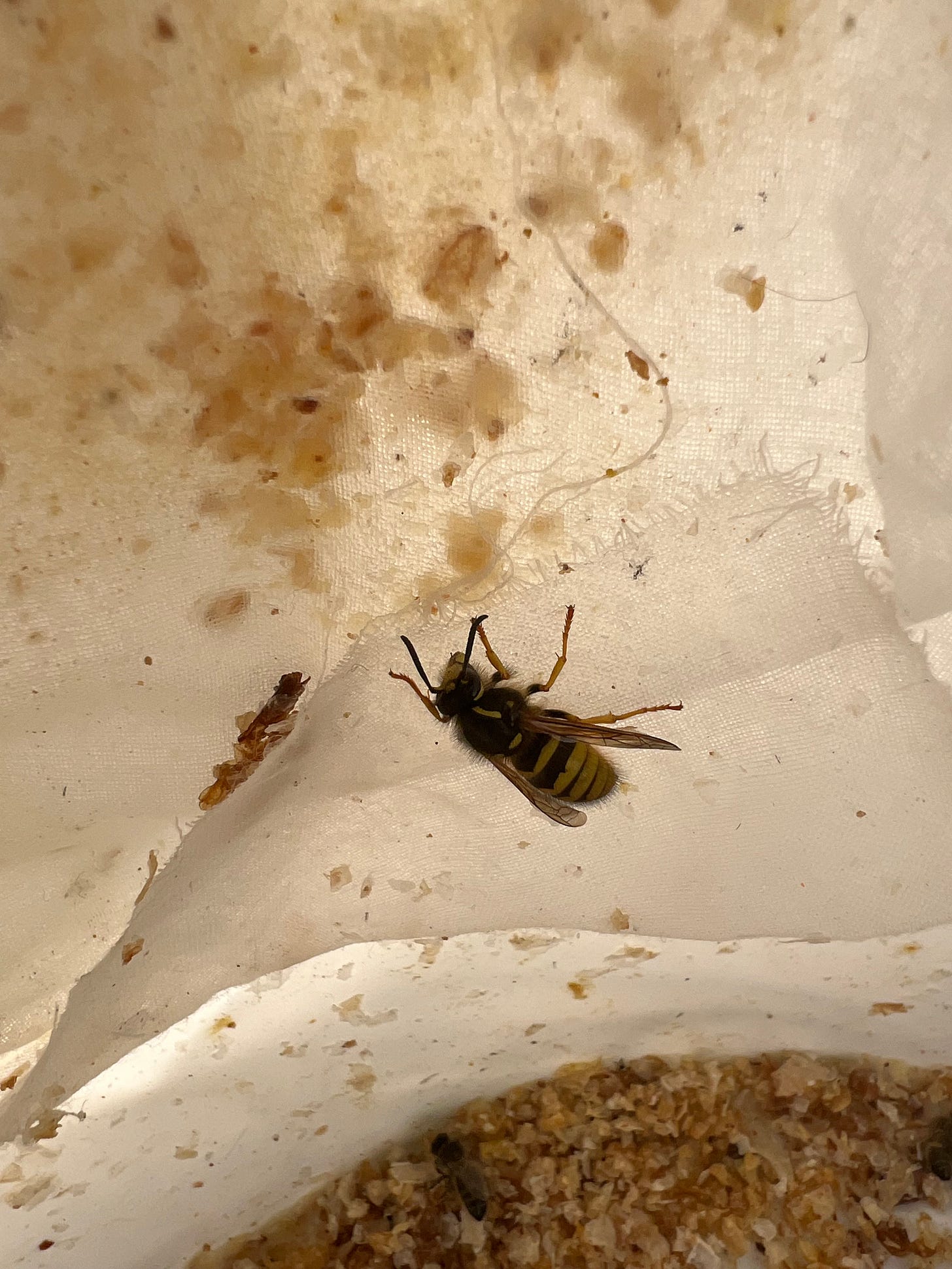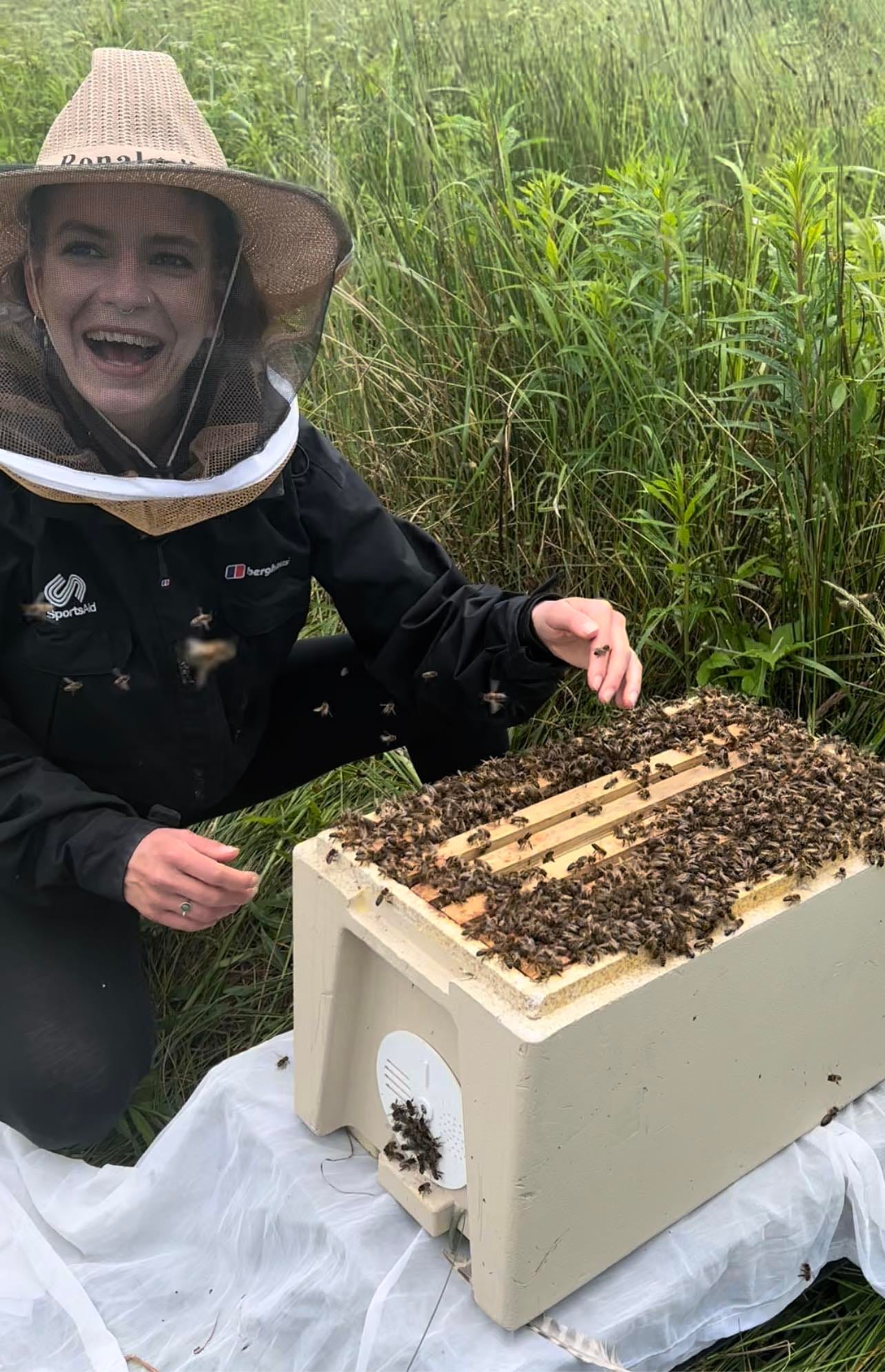Why I Don’t Kill Wasps Anymore
The Beewitching Embassy Issues a Ceasefire: On Wasps, Coexistence, and Unlearning Fear
Last week, I watched a queen wasp drink honey beside my honey bees.
No panic. No aggression. Just two pollinators—different species, same thirst—sharing a garden feeder.
A year ago, I would’ve squashed her.
Because that’s what I was taught to do. As a beekeeper. As a human.
Wasps are cast as villains in our world. Aggressive, parasitic, stinging for the sake of it.
But since last spring, something’s shifted.
I started watching them.
I started learning.
And now, I can say this with certainty:
I no longer kill wasps. And I don’t think you should either.
Let’s Begin With the Facts
Wasps are not just annoying flying predators around your picnic basket.
They are pollinators, architects, pest control experts, and essential members of our ecosystems.
Over 30,000 species of wasps exist worldwide. Most of them do not sting humans.
Social wasps (like the ones we see most often) eat aphids, caterpillars, and other insects that harm crops and gardens.
Many wasps pollinate plants—including figs, orchids, and wildflowers—especially as their colonies age and switch to a sugar-rich diet.
Their role in natural pest regulation is estimated to save billions in agricultural damage.
And yet… their PR is tragic.
They are hated, feared, and exterminated without question.
My Personal Reckoning
The deeper I went into natural beekeeping, the more I saw that the line between “bee protector” and “wasp killer” was drawn in fear—not in fact.
I had been told that wasps raid hives and harm bees. That they must be crushed on sight. But the truth is more nuanced.
Yes. Wasps can rob weak colonies in late summer.
But so can strong colonies of bees.
And the answer isn’t to kill everything that threatens the hive…
It’s to help the hive become strong enough to protect itself.
There is a kind of quiet violence in assuming the role of saviour and executioner.
The Beewitching Embassy Ceasefire
This spring, I witnessed peace.
A wasp queen, sharing space. Not fighting. Not stealing. Not stinging.
And in that moment, I understood:
The bees are not asking me to kill in their name.
So I won't.
The Beewitching Embassy now urges all humans—especially those who work with bees and gardens—to reconsider the war on wasps.
Let’s unlearn the panic.
Let’s watch before we squash.
Let’s teach children curiosity instead of fear.
We need them.
Wasps are also declining—silently.
They’re part of the larger insect collapse that threatens food webs, ecosystems, and our own survival.
To lose the wasps is to lose the bees.
To lose both is to lose the hum of life itself.
How to Coexist with Wasps (and Protect Your Bees)
Observe first. Most wasps you see in spring are queens looking for food, not fighters.
Strengthen your colonies. A strong hive doesn’t need you to eliminate everything around it. Offer them herbal honey tea throughout the season. (You can find my recipe HERE »> CLICK)
Reduce open feeders. Or place them far from hives to avoid too much mingling during late summer.
Re-wild your garden. Give wasps space to hunt, drink, and live—like you would bees.
Don’t destroy nests unless absolutely necessary. Many wasp colonies don’t survive the winter. Only the queen overwinters—usually under woodpiles, leaf litter, or sheltered nooks. If a nest isn’t posing a threat, consider waiting until autumn, when the colony dies naturally. You can safely remove or burn the abandoned nest then.
Teach peace. Model a calm, curious response to insects for those around you.
Closing Words
Wasps are not our enemies.
They are our evolutionary siblings.
And if we allow it, they can be our teachers.
I let this wasp live. And I hope you will too.
Signed,
On behalf of wings, wildness, and rebalancing the story—
The Beewitching Embassy






